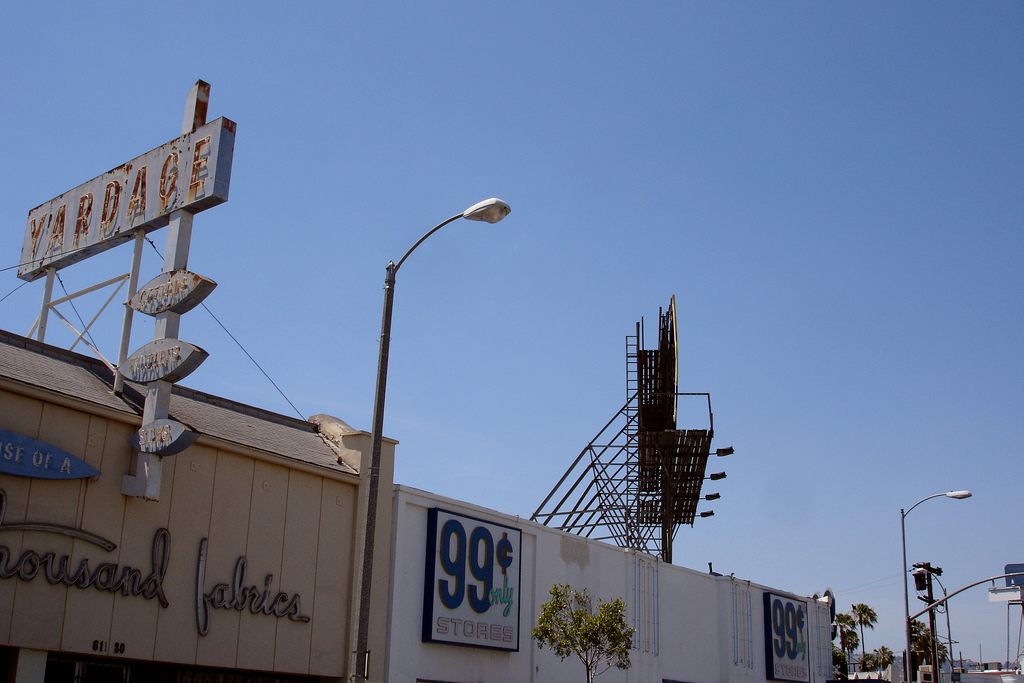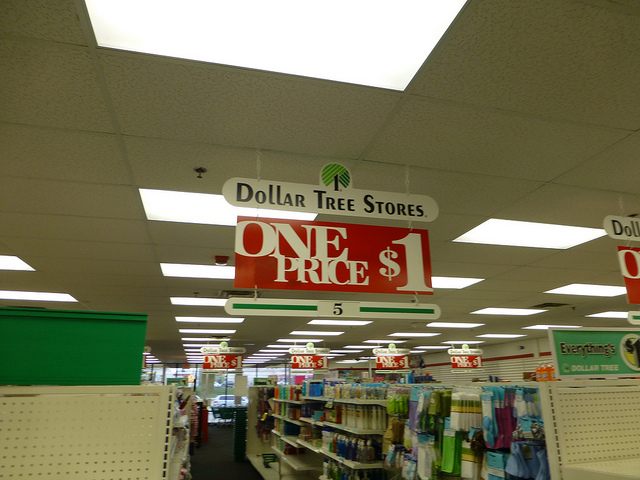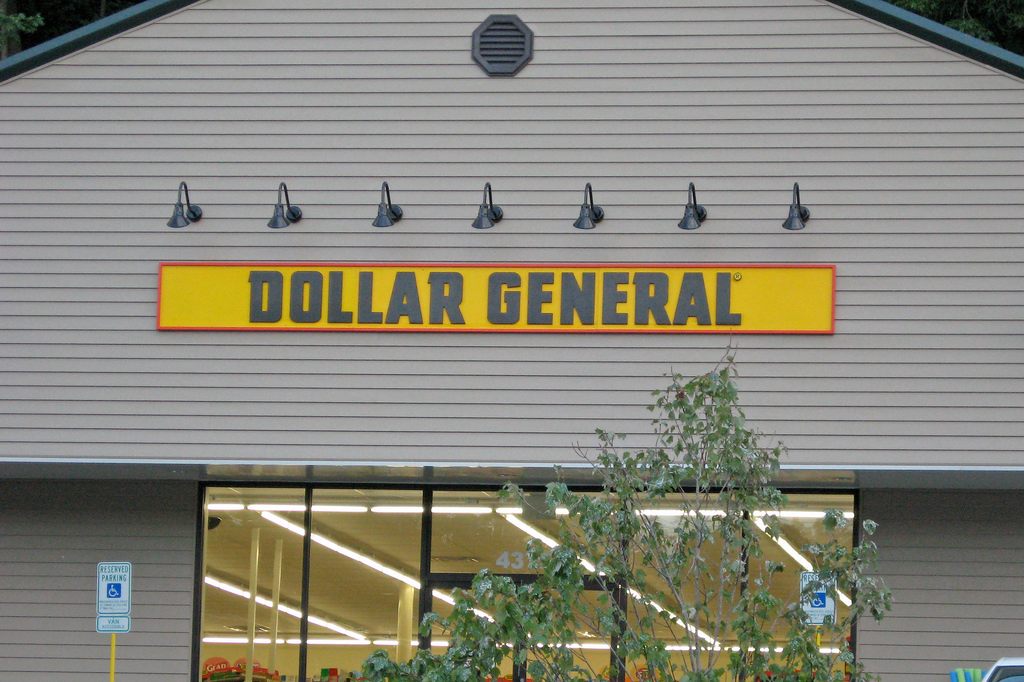How Dollar Stores Were Planted in the South and Bloomed Around the U.S.

A Family Dollar store in New York. (Photo: Random Retail/flickr)
A version of this post originally appeared on the Tedium newsletter.
All around the country, a handful of chain stores with the word “dollar” in their name—the Dollar Tree, Dollar General, Family Dollar, etc.,—have spread like kudzu. Here’s a business model that has, quite brilliantly, taken advantage of the ebbs and flows of supply and demand. It turns products that don’t cost a lot to produce into things that actually make money hand over fist, despite the seemingly tight margins.
Like companies that turn the liquidation of products into a viable business model and the makers of generic products, dollar stores have their place in the pantheon of retail.
The story of how they were founded, and why they grew, takes some surprising turns. It turns out that dollar stores are a great training ground to learn the retail game. Just ask Sam Walton.

A 99c store in Los Angeles. (Photo: Omar Bárcena/flickr)
Before the Walmart founder started building his chain of mega-stores around the country, he cut his teeth by owning a Ben Franklin store in Newport, Arkansas. If you don’t know about the Ben Franklin chain, it was something of a prototype for a dollar store, selling a variety of products for a fairly cheap price. It’s one of the longest-operating franchise operations in the country.
According to author Richard S. Teslow, when Walton was sold the store, the owners believed that they were selling Walton a bit of a lemon, and they charged him $25,000.
Little did they know they had given the store to a budding retail genius. Walton was so successful at selling stuff at the Ben Franklin that he had managed to turn the store into a sales juggernaut, putting away $250,000 in annual sales by his third year.
“Kudzu” is an apt descriptor for these businesses, as three most prominent chains all came from the South. Like Walton, the store founders all came from working at other retail operations. K. R. Perry, one of the founders of Dollar Tree, got his feet wet in retail business by launching a Ben Franklin store in Norfolk, Virginia in the early 1950s. That Ben Franklin store eventually became the starting point for chain, which took on its current name in 1993.
In nearby North Carolina, a 22-year-old Leon Levine took advantage of his knowledge that factories had slow periods in which he could buy products for lower prices, and launched his first Family Dollar in 1959. Starting in Charlotte, he had soon built one of the largest retail chains in the entire country.

Inside a Dollar Tree. (Photo: Nicholas Eckhart/flickr)
And in Kentucky in 1955, father-and-son team J.L. Turner and Cal Turner Sr. started up Dollar General, that bastion of small-town shopping. By the time Cal Turner Sr. died in 2000, the chain had 4,900 stores. Now it has more than 11,789 locations.
These days, the chains have become even more successful through consolidation. In 2014, the firm that owned Dollar Tree merged with its longtime competitor Family Dollar. Dollar Tree paid $9 billion to purchase its competitor, with the two chains combined having 13,000 locations.
What’s the secret of of their success? To put it simply, they’re really smart about getting people to buy products. Among the tricks your average dollar store will use to get you to buy as much as possible:
Putting the most popular products in the back: If you walk into a CVS or a Walgreen’s, the food is usually in the front, with the actual pharmacy located in the back. Family Dollar uses a similar strategy: The company puts food or toys, generally the most popular types of items in a dollar store, in the back of the store. In the front of the store are the impulse buys.
Consistency of store layout: If you walk into a big-box store like Meijer or Target in one area, odds are that you’ll walk into another location elsewhere and find the same kind of layout, consistent to a T. Family Dollar and similar stores follow this strategy as well, which helps to build loyalty, as consumers know what to expect every time they enter a store.
Market positioning: Different kinds of dollar stores aim their products at different kinds of audiences. Five Below, for example, focuses its products on teenagers and young adults, and as a result sells products such as smartphone cases. This also extends to locations: You’re more likely to find a Five Below location in a mall, whereas Dollar General tends to be located in small towns.
Relying on basic demand: Unlike mattresses, you need to replace cleaning supplies frequently. Paper plates don’t last long, and cheap smartphone cases tend to crack and break relatively easily. These are items you won’t buy online, generally—unless you’re looking for something very specific, like a gallon jug of lavender-scented Dr. Bronner’s soap—and it’s likely you won’t want to pay much for these items. And that’s where dollar stores come in handy—you don’t have to go all the way to Wal-Mart or Target just to fulfill the demand.
The perception of a low price: The good news for people who buy items at dollar stores—especially at ones that actually properly stick to the concept, like Dollar Tree and 99 Cents Only—is that you generally know you’re getting a low price out of the mix. Problem is, they are pulling a little bit of wool over your eyes, writes U.S. News and World Report’s Meg Favreau. First, the sizes of the products tend to be a little smaller, so if you do an ounce-to-ounce comparison with what you get at a grocery store, you might be surprised at how much more you’re paying. And there are some items that you might actually be paying more for if you buy them at a dollar store. But because the price tends to be consistent, you embrace that you’re getting a deal.
Sam Walton might have stayed in the dollar store market, if the owners of his original store hadn’t wanted it back. Walton paid $25,000 for the franchise, but signed a bad lease that contained no renewal clause. The lease owners, seeing Walton’s success, then decided they wanted the property back so they could cut Walton out of the equation.

A Dollar General. (Photo: NNECAPA Photo Library/flickr)
He was frustrated, but thanks to all the profits he brought in, he was able to launch a department store of his own. He and his family eventually left Newport and he soon opened up many Ben Franklin stores around the region.
Later, he took his knowledge from working the Ben Franklin stores to a new chain of his own, Walmart—one, it should be said, was heavily inspired by the Meijer chain just getting its start in Michigan. About 20 years after departing the Newport market, Walton came back to town … with a Walmart.
“As it happened, we did extraordinarily well with our Newport Walmart, and it wasn’t too long before the old Ben Franklin store I had run on Front Street had to close its doors,” Walton recalled. “You can’t say we ran that guy—the landlord’s son—out of business. His customers were the ones who shut him down. They voted with their feet.”
A version of this post originally appeared on Tedium, a twice-weekly newsletter that hunts for the end of the long tail.










Follow us on Twitter to get the latest on the world's hidden wonders.
Like us on Facebook to get the latest on the world's hidden wonders.
Follow us on Twitter Like us on Facebook